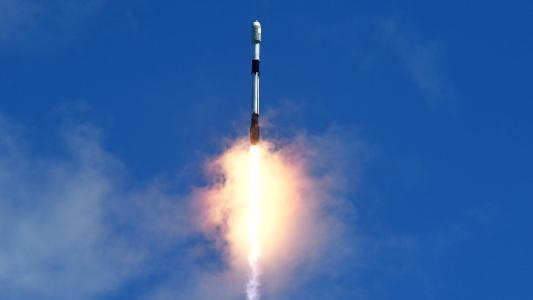This is T-Minus, where we count down the biggest developments in space, from new rocket launches to discoveries that advance our understanding of the universe and our place in it. Humanity is reaching new heights in space exploration. Make sure you’re part of the journey by subscribing here.


Gaia’s gravity “goldmine”
In 2013, the European Space Agency (ESA) launched Gaia, a space telescope mission to survey our galaxy with unprecedented precision so that astronomers could map the motions and characteristics of more than two billion objects, including stars, exoplanets, and asteroids.
On October 10, ESA shared the latest Gaia data, and it includes the first example of the spacecraft being used to find gravitational lenses: objects so massive, they distort and magnify light behind them in a way that allows us to see things that would be too far away to see otherwise.
Because it takes light so long to travel across the universe, when we look at really distant objects, we’re actually seeing what they looked like a long time ago — and because gravitational lenses let us look really far away, they also let us see really far back in time.
Gravitational lenses are hard to find, but because Gaia is looking everywhere, it can spot ones in places no one thought to look. That has now led to the discovery of nearly 400 gravitationally lensed quasars, which are extremely bright objects created by supermassive black holes.
“[This is] a goldmine for cosmologists, and the largest set of candidates ever released at once,” said co-author Christine Ducourant.


A first look at Bennu
In late September, NASA’s OSIRIS-REx spacecraft yeeted a capsule containing pieces of the asteroid Bennu down to Earth, a thrilling finish to a mission that began seven years ago.
The capsule’s landing in Utah also signaled the start of a brand-new journey: scientists across the globe will study the asteroid material in the hope of learning more about Earth’s past and how to protect it from threatening asteroids in the future.
On October 11, NASA kicked off that journey by sharing the first images of bits of the Bennu asteroid that collected on the outside of the sample container, as well as its first analysis of the material.
Not only did OSIRIS-REx collect much more asteroid material than NASA anticipated — about 250 grams versus the goal of 60 grams — the sample also appears to be rich in carbon and water-bearing minerals, adding evidence to the theory that asteroid impacts might have seeded Earth with the ingredients for life.
“The OSIRIS-REx sample is the biggest carbon-rich asteroid sample ever delivered to Earth and will help scientists investigate the origins of life on our own planet for generations to come,” said NASA Administrator Bill Nelson.


Psyche begins its journey
Friday the 13th was a scary good day for NASA, as the launch of its Psyche mission went off without a hitch.
The spacecraft is now en route to the metal-rich asteroid 16 Psyche, which astronomers believe could be the shattered core of a “planetesimal,” a building block of a planet. If so, that means by examining it, we could get an idea of what Earth’s own (inaccessible) core looks like, and how it formed.
It’ll take the solar-powered Psyche six years to travel the 2.2 billion-mile path NASA charted out for the mission (the roundabout route saves on fuel). Once it arrives, it’ll spend more than two years orbiting the unusual asteroid, collecting data, taking pictures, and mapping its surface.
During its journey, the spacecraft will also demonstrate a new communication system based on lasers rather than radio waves — if it works as hoped, it could allow probes in deep space to transmit more data to Earth, more quickly.
“Congratulations to the Psyche team on a successful launch, the first journey to a metal-rich asteroid,” said NASA Administrator Bill Nelson. “The Psyche mission could provide humanity with new information about planet formation while testing technology that can be used on future NASA missions.”
We’d love to hear from you! If you have a comment about this article or if you have a tip for a future Freethink story, please email us at [email protected].



